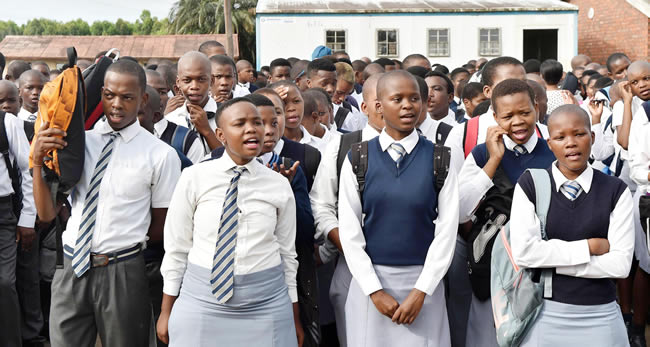The Department of Social Development, in partnership with the National Student Financial Aid Scheme (NSFAS), is making sure that children who receive social grants are able to further their studies at institutions of higher learning.

As part of the partnership, social grant beneficiaries would not be double means tested for financial eligibility.
“This policy-reforming initiative is in its infancy but it allows academically eligible social grant beneficiaries not to be double means tested for financial eligibility. A special outreach project was initiated in October 2016, which was aimed at reaching a large number of poor and vulnerable children in Grade 12 eligible to apply for NSFAS funding for the 2017 academic year,” said Social Development Minister Bathabile Dlamini.
Grant beneficiaries in numbers:
- 188 758 matric learners were social grant beneficiaries.
- 112 409 social grant beneficiaries who wrote matric were female and live in Gauteng and KwaZulu-Natal
- 41 percent received a Bachelor’s pass.
- Every month, more than 12 million children receive social grants
- Every month R11 billion worth of social grants are distributed to poor South Africans
Minister Dlamini explained that as a way of providing comprehensive and integrated services for social grant beneficiaries, her department, the Department of Basic Education and the South African Social Security Agency signed a Protocol Agreement.
“The current Protocol Agreement was extended to include NSFAS to ensure that poor children have access to financial assistance to either study at universities or Technical and Vocational Education and Training (TVET) colleges.”
At the heart of this initiative is tracking and reporting on the investment government is making to improve the quality of lives of children through linking of administrative data systems.
“This is made possible by using the identity number as a unique number or variable to any administrative data and matching various data systems in order to determine the extent to which children access services and interventions that government provides.”
Performance of Grade 12 pupils on social grant
Minister Dlamini also highlighted the performance of Grade 12 learners who received social grants. This included children living in child- and youth-headed families and those in foster care families.
She added that her department has put in place measures that look after children in child- and youth-headed households through the department’s Isibindi programme. The programme deploys child and youth care workers in communities to assist children in vulnerable homes.
Minister Dlamini said the programme has a special focus on Grade 12 learners and in 2016, 3 400 matriculants were part of this programme.
“The assistance by Isibindi child and youth care workers ensures that our children remain in school and attend classes. The child and youth care workers support these children and make sure that they are relieved of household responsibilities, including being parents to their siblings while they are trying to pass Grade 12.”
Minister Dlamini said out of the over 600 000 full-time learners who wrote matric 188 758 were social grant beneficiaries
“Out of this total 178 411, beneficiaries actually wrote their examinations about 95 percent. This suggests that over 10 000 grant recipients dropped out of school before sitting for their final examinations. We commit to investigating reasons for this dropout.”
She said despite the conditions of vulnerable children 41 percent managed to receive a Bachelor’s pass, which gives them entry to any tertiary education institution. The majority of the learners who obtained a Bachelors Pass were from KwaZulu-Natal and Gauteng.



 Facebook
Facebook Twitter
Twitter WhatsApp
WhatsApp